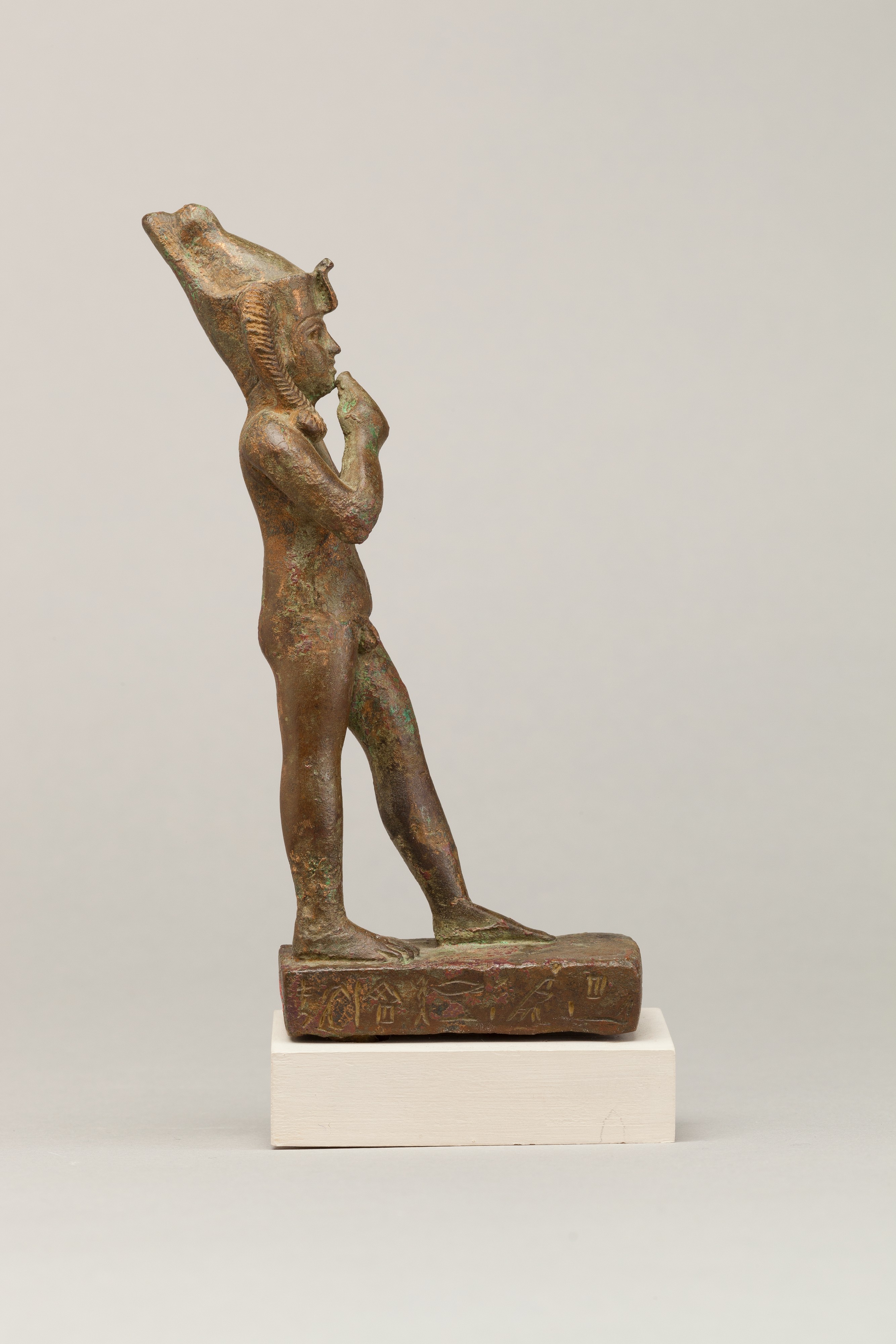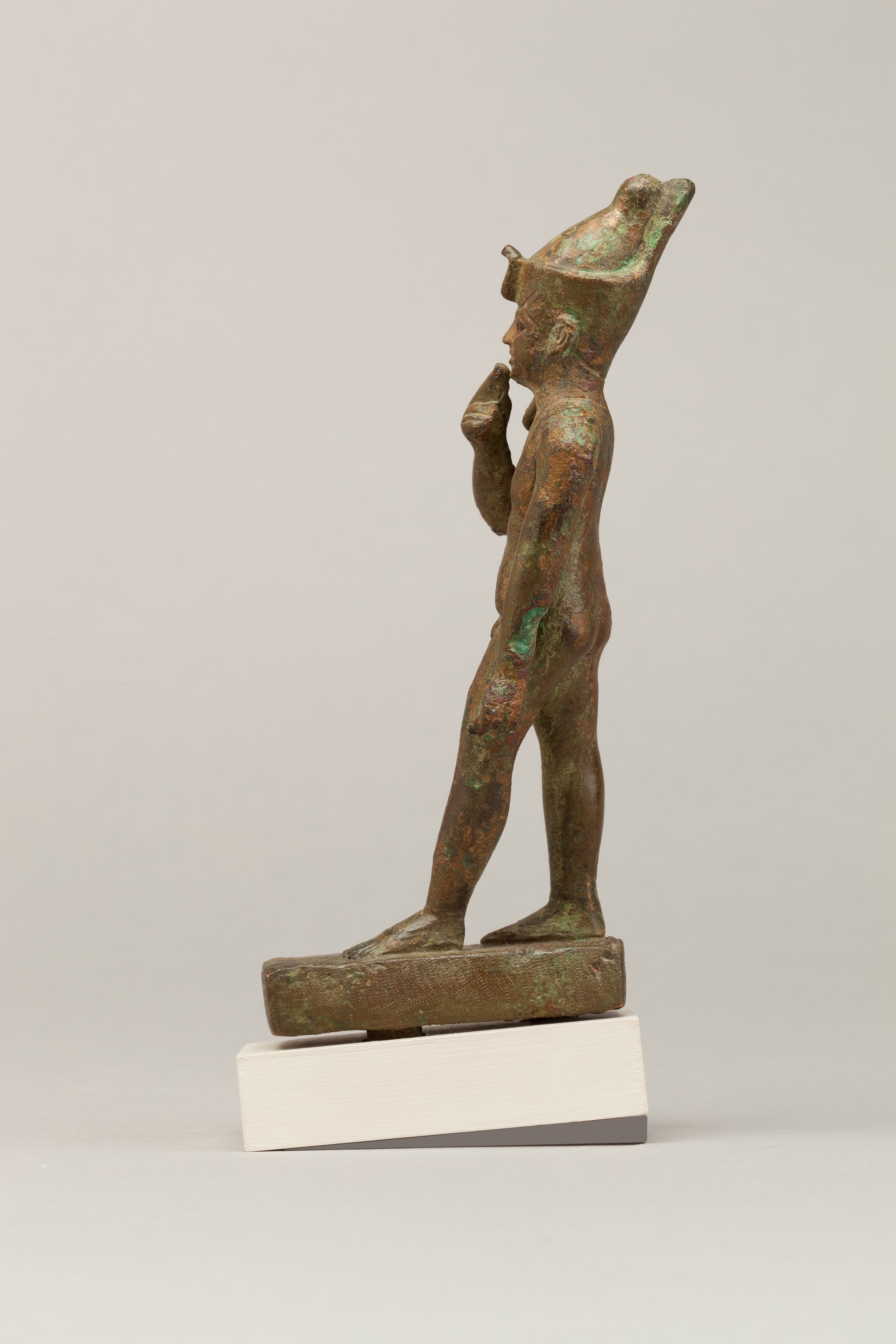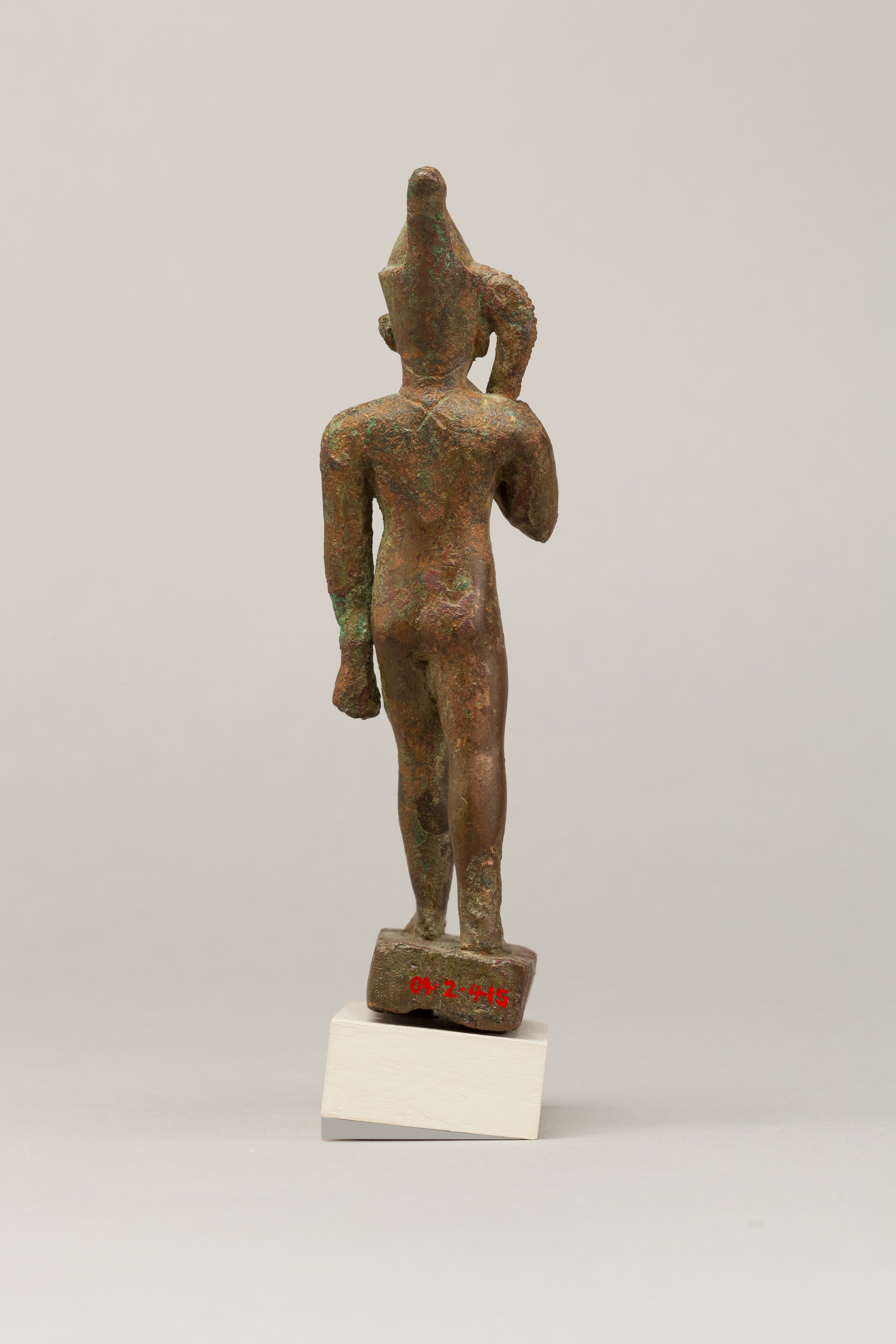Harpokrates in a double crown
Late Period–Ptolemaic Period
The figure represents a child god in a striding/standing position, wearing the double crown, which alludes to his royal status. The child god is distinguished from adult gods by a range of iconographic clues: his nudity, the finger raised to the mouth (a child-like gesture), and the sidelock on the right side of his head. He wears an amulet on his chest, another attribute common to child gods but not adult gods. Crossed lines at the back of the neck show where the suspension cord ties.
Child gods grew in popularity and cult from the Third Intermediate Period onwards, rivaling even the most powerful and ancient gods, especially as temple offerings. On this figure, the double crown and the inscription on the base identify the god as Harpokrates (Horus the Child), who was the son of Osiris and Isis. This royal crown symbolizes the union of Lower and Upper Egypt, and highlights Horus’ role as the legitimate ruler of the entire land and his direct association with the king.
This image cannot be enlarged, viewed at full screen, or downloaded.
This artwork is meant to be viewed from right to left. Scroll left to view more.





